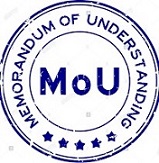Optimalisasi Penggunaan E-learning dengan Model Delone dan McClean
DOI:
https://doi.org/10.23887/jet.v4i2.24819Kata Kunci:
Information System, E-learning, Delone and MccleanAbstrak
The University of Padang (UNP) is one of the educational institutions in implementing e-learning. This research used quantitative method. The researcher evaluated e-learning by using the information success system DeLone & McClean model. This research was expected to be able to find out the overview of UNP e-learning. Based on data analysis, it showed that respondents’ level of achievement (TCR) reached 88.07% was categorized into good. The quality of information showed that the TCR reached 87.36% was categorized into good. Service quality of TCR reached 87.76% was categorized into good. The use that TCR reached 88.24% was categorized into good. Respondents’ satisfaction showed that TCR reached 88.73% was categorized into good. The benefit of TCR reached 84.10% was categorized into good. So, e-learning of Padang University had "Good" measurement on all variables, of course it would affect the use of e-learning itself, especially managed by educators and students' use.
Referensi
Ambiyar dan Syahril (2015) Statistik. Padang: Universitas Negeri Padang
Andarwati, Mardiana.2016. Analisis Faktor Yang Mempengaruhi Kesuksesan Penggunaan Core Banking System (CBS) Dengan Menggunakan Model Delone dan Mclean. Jurnal Keuangan dan Perbankan, Vol.20, No.3 September 2016, hlm. 458–467 Terakreditasi SK. No. 040/P/2014 http://jurnal.unmer.ac.id/index.php/jkdp
Basrie dan Amelia Yusnita.2018. Sistem Informasi E-Learning Sebagai Sistem Perkuliahan Perguruan Tinggi (Studi Kasus: Stmik Widya Cipta Dharma Samarinda). Seminar Nasional Teknologi Informasi dan Komunikasi 2018 (SENTIKA 2018) ISSN: 2089-9815 Yogyakarta, 23-24 Maret 2018. https://fti.uajy.ac.id/sentika/publikasi/makalah/2018/37.pdf
DeLone, W. H. dan McLean, E. R. (2016) Information Systems Success Measurement. American University, USA. Doi: 10.1561/2900000005.
Ding, Y. (2010). Quality in IS research. Theory and validation of constructs for service, information, and system.
Gottschalk, H. T. 1995. Distance Education: An Overview. Available: http://www.uidaho.edu/evo/dist1.html.
Hartanto, Wiwin. 2016. Penggunaan E-Learning Sebagai Media Pembelajaran. http://jurnal.unej.ac.id/index.php/JPE/article/download/3438/2696.
Hapsari, Lely, Trihandayani, Ismiarta Aknuranda, Yusi Tyroni Mursityo. 2018. Penerapan Model Kesuksesan Delone dan Mclean pada Website Fakultas Ilmu Komputer (FILKOM) Universitas Brawijaya. Jurnal Pengembangan Teknologi Informasi dan Ilmu Komputer e-ISSN: 2548-964X Vol. 2, No. 12, Desember 2018, hlm. 7074-7082 http://j-ptiik.ub.ac.id
Hari, Pujo, Saputro, A. Djoko Budiyanto, dan Alb. Joko Santoso. 2015. Model Delone and Mclean untuk Mengukur Kesuksesan E-government Kota Pekalongan. Scientific Journal of Informatics Vol. 2, No. 1, Mei 2015 p-ISSN 2407-7658 http://journal.unnes.ac.id/nju/index.php/sji e-ISSN 2460-0040.
Jamal Maulana Hudin dan Dwiza Riana. 2016. Kajian Keberhasilan Penggunaan Sistem Informasi Accurate dengan Menggunakan Model Kesuksesan Sistem Informasi Delon dan Mclean. Jurnal Sistem Informasi (Journal of Information Systems). 1/12 (2016), 1-8 DOI: http://dx.doi.org/10.21609/jsi.v12i1.444.
Khan, B. (2005). Managing e-learning strategies: Design, delivery, implementation, and evaluation. USA: Idea Group, Inc.
Kayun, Wayan Suwastika.2018. Pengaruh E-Learning Sebagai Salah Satu Media Pembelajaran Berbasis Teknologi Informasi Terhadap Motivasi Belajar Mahasiswa. Jurnal Sistem dan Informatika Vol. 13, No. 1, November 2018. P-ISSN: 1858-473X | e-ISSN: 2460-3732. https://jsi.stikom-bali.ac.id/index.php/jsi/article/view/185.
Muryadi, A. D. (2017) ‘Model Evaluasi Program Dalam Penelitian Evaluasi’, Jurnal Ilmiah PENJAS, 3(1), p. ISSN : 2442-3874.
Maudiarti, Santi. 2018. Penerapan E-Learning di Perguruan Tinggi. PERSPEKTIF Ilmu Pendidikan - Vol. 32 No. 1 April 2018. DOI: https://doi.org/10.21009/PIP.321.7. https://media.neliti.com/media/publications/259453-penerapan-e-learning-di-perguruan-tinggi-056c86ea.pdf.
Mutia, Intan dan Leonard. 2013. Kajian Penerapan E-Learning dalam Proses Pembelajaran di Perguruan Tinggi. Faktor Exacta 6(4): 278-289, 2013 ISSN: 1979-276X M.
Noviyant.2016. Mengukur Kesuksesan Sistem Akuntansi Instansi Basis Akrual (Saiba) Menggunakan Model Delone & Mclean. Jurnal Tata Kelola & Akuntabilitas Keuangan Negara. Volume 2, Nomor 2, Desember 2016: 151– 173
Nunu, Mahnun. 2018. Implementasi Pembelajaran Online dan Optimalisasi Pengelolaan Pembelajaran Berbasis Online di Perguruan Tinggi Islam dalam Mewujudkan World Class University. IJIEM: Kajian Teori dan Hasil Penelitian Pendidikan, Vol. 1, No. 1, April 2018. http://ejournal.uin-suska.ac.id/index.php/IJIEM/article/download/5240/3088.
Petter, S., Delone, W., & Mclean, E. (2008). Measuring information systems success. Models, dimensions, measures, and interrelationships. European Journal of Information Systems, 17(3), 236-263.
Riduwan (2009) Dasar-dasar Statistika. Bandung: Alfabeta
Sugiyono (2015) Metode Penelitian dan Pengembangan (R&D). Bandung: Alfabeta.
Suharsimi, A. dan Jabar, C. S. A. (2008) Evaluasi Program Pendidikan. Jakarta: Bumi Aksara.
Wicaksono, Haryoso.2018. Implementasi Blended Learning (Studi Kasus di STMIK Indonesia Mandiri & STIE-STAN Indonesia Mandiri Bandung). Jurnal Informasi Volume X No.1 / Februari / 2018. http://informasi.stmik-im.ac.id/wp-content/uploads/2018/07/03-HARYOSO-W.pdf.
Unduhan
Diterbitkan
Cara Mengutip
Terbitan
Bagian
Lisensi
Authors who publish with the Journal of Education Technology agree to the following terms:
- Authors retain copyright and grant the journal the right of first publication with the work simultaneously licensed under a Creative Commons Attribution License (CC BY-SA 4.0) that allows others to share the work with an acknowledgment of the work's authorship and initial publication in this journal.
- Authors are able to enter into separate, additional contractual arrangements for the non-exclusive distribution of the journal's published version of the work (e.g., post it to an institutional repository or publish it in a book), with an acknowledgment of its initial publication in this journal.
- Authors are permitted and encouraged to post their work online (e.g., in institutional repositories or on their website) prior to and during the submission process, as it can lead to productive exchanges, as well as earlier and greater citation of published work. (See The Effect of Open Access)


















